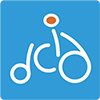Features of Telerehabilitation and Considerations for Resource-Limited Settings: A Scoping Review
Abstract
Aim: The global need for rehabilitation is extensive yet remains significantly unmet. Health systems, especially in low- and middle-income countries (LMICs), lack structures and resources to address the rapidly growing need for rehabilitation services. Telerehabilitation offers an innovative approach to narrow health systems gaps and facilitate rehabilitation services. Few studies have investigated features and functionalities used in telerehabilitation, especially regarding implications for resource-limited settings and LMICs. This scoping review aims to identify technological features and functionalities used to deliver telerehabilitation, map them onto clinical care processes, and outline gaps and directions for future research. Methods: This study utilized the PRISMA- checklist. Six databases were searched (PubMed, Embase, Scopus, CINAHL, Compendex, NARIC) to identify articles that described the remote delivery of rehabilitation services. Three reviewers screened and selected relevant publications. Descriptive statistics and qualitative content analysis were used to analyze full-text articles. Results: 135 articles were included in the full-text review. The publication year ranged from 1997 to 2021. The most frequently identified telerehabilitation feature was “data collection,” followed by “videoconferencing,” and “messaging.” Features mapped onto six clinical categories, with “implementation” accounting for 41% of all features, Only 18% of articles focused on LMICs. Few papers included a comprehensive platform of features, discussed integration into health systems, or included financial analyses. Conclusions: Diverse technological features exist for the remote delivery of rehabilitation services, but few cohesive platforms offer features across multiple clinical categories. Additionally, high income countries are overwhelmingly represented in the literature. Future directions for research include expanded focus on resource-limited settings and LMICS, discussion about financial considerations, and attention to health systems integration. Limitations: The generalizability of our findings are limited given the rapid growth of literature on telerehabilitation and continued development of apps and platforms since the time of review.
Full text article
Authors
Copyright (c) 2024 The Author(s)

This work is licensed under a Creative Commons Attribution-NonCommercial-NoDerivatives 4.0 International License.
Authors who publish with this journal agree to the following terms:
- Authors retain copyright and grant the journal right of first publication with the work simultaneously licensed under a Creative Commons Attribution License By-NC-ND 4.0 that allows others to share the work with an acknowledgement of the work's authorship and initial publication in this journal.
- Authors are able to enter into separate, additional contractual arrangements for the non-exclusive distribution of the journal's published version of the work (e.g., post it to an institutional repository or publish it in a book), with an acknowledgement of its initial publication in this journal.
- Authors are permitted and encouraged to post their work online (e.g., in institutional repositories or on their website) prior to and during the submission process, as it can lead to productive exchanges, as well as earlier and greater citation of published work (See The Effect of Open Access).





